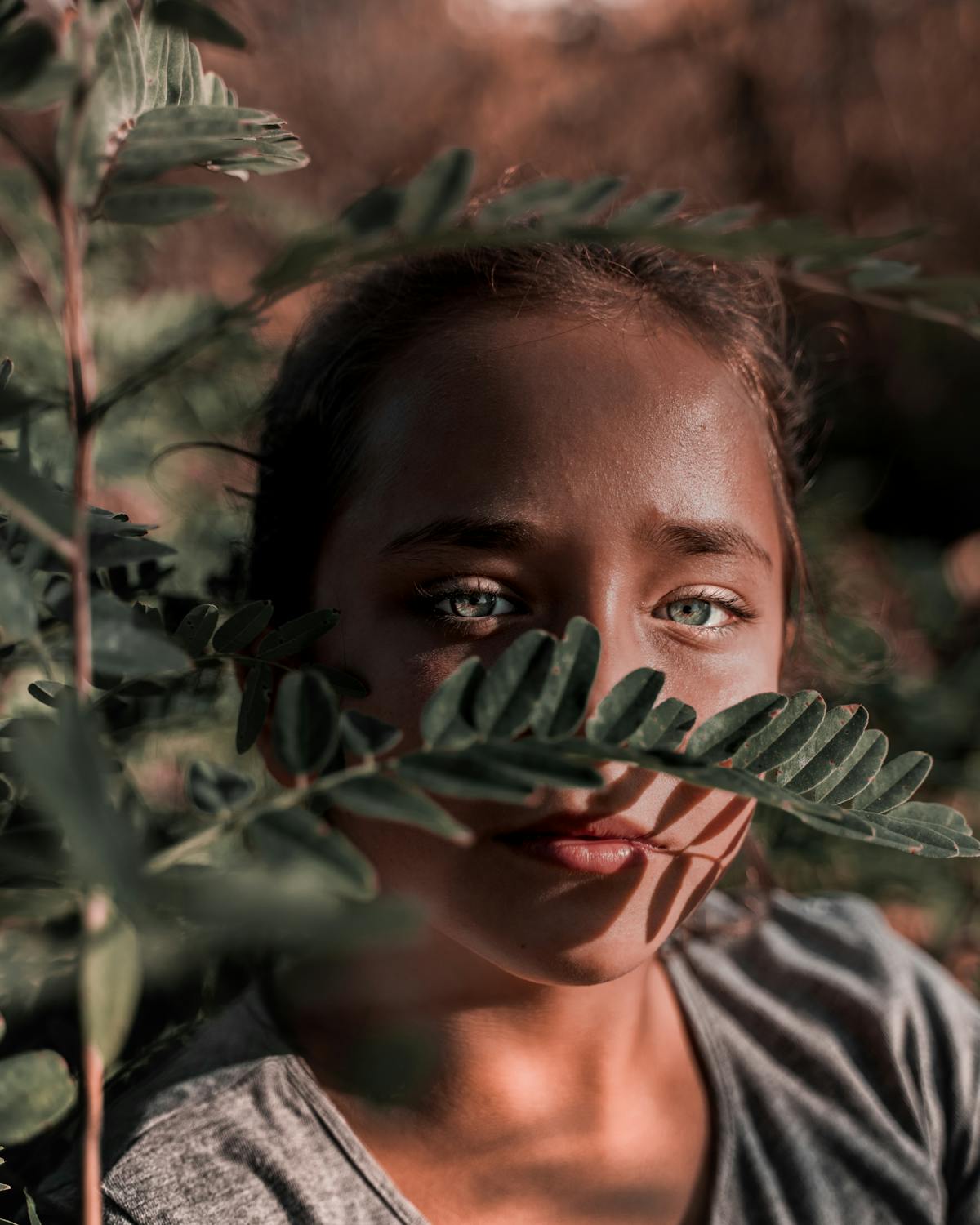
Ropewalker, Winged Life Finalist: In the Ecuadorian highlands, a speckled hummingbird balances on … [+]
Photo: Nicolas Reusens, Barcelona, Spain – The Big Picture 2021
The renowned BigPicture Natural World Photography Competition by the California Academy of Sciences has announced the 2021 winning photos of life on Earth “from the beautiful to the bizarre,” showcasing some of our planet’s most amazing species and places.
“In addition to capturing the beauty and biodiversity of our planet, some of the images also show the scars of this challenging year,” the organizers explain.
From the overall winning photo of an eastern grey kangaroo standing amidst burnt eucalyptus trees after Australia’s devastating bushfires to a curious California sea lion investigating a mask floating off the coast of Monterey, these images by some of the world’s best photographers illustrate the planet’s biodiversity and the many threats that it, and we, face.
BigPicture is open to all photography enthusiasts and professionals worldwide to compete for a chance to win a $5,000 grand prize and to be exhibited at the California Academy of Sciences.
The photos also appear originally on the online magazine bioGraphic, official media sponsor for the contest.
The winning images
The overall winner was taken by photographer Jo-Anne McArthur, who encountered a female eastern grey kangaroo (below), with a joey in her pouch, that somehow had survived a devastating bushfire near Australia’s southeast coast. She was accompanying a team from the conservationist organization Vets for Compassion that was searching for injured and starving koalas at a eucalyptus plantation.
“For McArthur, it was a powerful moment: two of Australia’s most iconic species—the kangaroo and the eucalyptus tree—standing at a worrisome crossroads in their history,” BigPicture said. “But the individuals in her frame were also symbols of hope, that life can persist against all odds.”

Grand Prize Winner, Hope In a Burned Plantation, Australia: An Eastern grey kangaroo and her joey … [+]
Photo: Jo-Anne McArthur / We Animals Media – BigPicture Photo Competition
Iconic Australia is captured in this particular moment as a resilient kangaroo with her baby, pauses in a burned eucalyptus plantation. Lucky survivors, escaping from an area that had been transformed by humans for farming and then devastated by fire.
Nearly three billion animals perished or were displaced in the cataclysmic Australian bushfires of 2019 and 2020 that ravaged the Australian landscape, burning some 42 million acres.
Winged life

Beak to Beak, Winged Life category winner, Mount Seymour Provincial Park, Canada.
Photo: Shane Kalyn, Vancouver, Canada – The Big Picture
After preening each other’s feathers, the ravens took turns inspecting every nook and cranny in each other’s beaks — talking to one another throughout the process. In three winters of observing the gift-sharing, grooming and singing courtship behaviors of ravens on the mountain, the photographer had never witnessed anything like this.

Orange Tint, Winged Life finalist: detail of the colorful wings of the Sri Lankan junglefowl.
Photo: Ashane Marasinghe, Kadawatha, Sri Lanka – The Big Picture
The junglefowl, the national bird of Sri Lanka, is a flightless bird with colorful feathers whose ancestor is closely related to domestic chickens. Not to be upstaged, the blood-sucking batfly in the lower right corner has evolved to maneuver through such feathers.
Terrestrial life

Boss, Terrestrial Life winner: Great Bear Rainforest, Canada.
Photo: Michelle Valberg, Gloucester, Canada – The Big Picture
This Kermode bear, also known as ‘spirit bears’ or ‘ghost bears’, due to their unusual white color, is one of only a few hundred in this subspecies of the American black bears living on remote islands in northern British Columbia.
The bear had lowered his head into the river in search of salmon roe. When he pulled his head up and shook, droplets spiraling around his head, he looked at the photographer for a split second, and then plunged back into the water for his meal.

Microspur1, Terrestrial Wildlife finalist, Taiwan: the birth of dozens of cannibal lynx spiders.
Photo: Lung-Tsai Wang, Taichung City, Taiwan – The Big Picture
The birth of dozens of lynx spiders is followed by two days of cannibalism until only one spider remains. This mesmerizing spectacle of the ultimate sibling rivalry can be observed annually in the mountains of Taiwan.
Aquatic life

New Kid in School, Aquatic Life winner: Barracuda in Koror, Palau.
Photo: Yung-Sen Wu, Ho Chi Minh City, Vietnam –
With mountainous reefs, more than a thousand species of tropical fish and several species of coral-dwelling sharks swim in Palau’s Blue Corner, located about 40 kilometers southwest of Koror.
Known more for their hunting prowess than their hospitality, the barracuda were slow to acclimate to the photographer’s presence. He swam with them for four days, looking for the perfect angle. At the end of his fifth day, the fish allowed him to swim among them as part of the school and he captured this fisheye view. On the sixth day, he joined the fish without his camera.

Facing Reality, Aquatic Life finalist: leopard seal about to eat a young Gentoo penguin in Pleneau … [+]
Photo: Amos Nachoum, Pacific Grove, United States – The Big Picture
With their silky coats, big, dark eyes and perpetual grins, leopard seals can look downright cuddly lounging on Antarctic ice floes. Penguins, though, have a different perspective.
The young gentoo penguin in the picture jumped into the lagoon to play during low tide — and got ambushed by the leopard seal.
Weighing up to 600 kilos, with powerful jaws lined with sharp teeth and long front flippers that propel them through the water at speeds up to 37 kilometers per hour, leopard seals catch a wide range of prey: from krill, fish, octopuses and crabs to penguins and other seals.
Penguins constitute about a quarter of the leopard seal’s diet throughout the year. That proportion increases to nearly 50% for the larger female leopard seals, especially when they have pups.

Private Moment of Milk Feeding, Aquatic Life finalist: A mother whale nursing her baby in the Indian … [+]
Photo: Mike Korostelev, Moscow, Russia – The Big Picture
A pod of sperm whales in the Indian Ocean tolerated the photographer’s proximity long enough for him to catch one of the mothers nursing her baby, almost at the water’s surface. Not so easy to hold your breath and drink at the same time — for the baby whale, that is.
Landscapes, waterscapes and flora

Another Planet, Landscapes, Waterscapes, and Flora winner: Fjallabak Nature Reserve, Iceland, where … [+]
Photo: Fran Rubia, Roquetas de Mar, Spain – The Big Picture
What looked to be mountains from the ground turned out to be extinct volcanoes as captured by this drone shot taken on a cloudy day in June during the period of the midnight sun in Fjallabak Nature Reserve.
The seemingly flowing lava is, in fact, iron oxide deposited during past eruptions. Unlike Geldingadalir, a volcano just 20 minutes away from Reykjavík that has been actively erupting since March 19, 2021, the last eruption here in Fjallabak occurred in 1480.
The climate in the reserve is arid and cold and the growing season is limited to about two months a year. So, vegetation is scarce and mineral-streaked mountains provide the landscape with an otherworldly atmosphere.

Snared, Landscapes, Waterscapes and Flora finalist: A carnivorous Venus flytrap catches a hoverfly.
Photo: Nick Kanakis, Dallas, United States – The Big Picture
In this macro shot, the detailed structure of the Venus flytrap is beautifully apparent, as is its technique — with a captured hoverfly.
This plant species is endemic to a small stretch of wet longleaf pine habitat in the sand hills and coastal plains of the Carolinas, United States.
That role reversal, a plant that eats animals, has become a popular novelty for many people, driving a lucrative market in cultivated plants — and sadly, the poaching of wild ones.

Tree Of Life, Landscapes, Waterscapes and Flora finalist: A cliff-dwelling baobab tree in Ruacana … [+]
Photo: Anette Mossbacher, Bergdietikon, Switzerland – The Big Picture
Light from the quickly setting sun highlights this cliff-dwelling baobab tree as shadows move up the valley. The waterfall is a surprising backdrop for this ancient tree, which has adapted to extremely arid conditions.
Human, nature

Sign Of The Tides, Human/Nature winner: California sea lion playing with a KN95 mask in Monterey, … [+]
Photo: Ralph Pace, Pacific Grove, United States – The Big Picture
A discarded face mask in the shape of a sea turtle attracts a notoriously curious California sea lion.
The effects of the Covid-19 pandemic will likely linger for years to come — including those on our environment. The production of single-use plastics has skyrocketed, largely driven by the surge in epidemiologically-necessary but ecologically-devastating personal protective equipment.
According to one study, 129 billion face masks and 65 billion gloves have been used globally each month, 75 % of which are likely to end up in landfills or the ocean. Much of that equipment—including this mask being investigated by the sea lion — is made from durable plastics that take hundreds of years to break down. Perhaps a new picture of our approach to single-use goods will soon emerge.

Why Did The Sloth Cross The Road? Human/ Nature finalist: A moss-covered, three-toed sloth crossing … [+]
Andrew Whitworth, Puerto Jiménez, Costa Rica – The Big Picture
Getting to the other side of a road is a challenge, especially for a slow-moving sloth. Due to the danger of speeding on the roads, a movement has developed to create arboreal bridges for animal crossings in biodiversity hot spots like the Osa Peninsula, Costa Rica. Here, amid stormy conditions, this beautiful moss-covered, three-toed sloth survived.
Art of nature

The Goblet of Fire, Art of Nature winner: A mushroom illuminated by a flash light in Toplepada, … [+]
Photo: Sarang Naik, Mumbai, India – The Big Picture
This mushroom, illuminated by a simple flashlight, was one of many fungi growing around the photographer’s house in Toplepada, India’s countryside. During the monsoon season, the mushrooms release a golden plume of spores throughout the day for almost a month, a common but often-ignored phenomenon.
In due time, this magical pixie dust will create more mushrooms. While a small number of these mighty motes will land on soil suitable enough for producing the branching underground filaments that beget new mushrooms, many more spores will find their way into the atmosphere to serve an equally important purpose.
Each year, millions of tons of fungal spores are aerosolized into the atmosphere where they provide the solid core for the condensation of water into clouds and rainfall, breathing life into forests around the world and sustaining future generations of fungi.
This cycle can go both ways, however. As droughts worsen with climate change, fewer mushrooms will spring up, which in turn lessens spore-spurred rains.

Down the Hatch, Art of Nature finalist: Barrel jellyfish, also known as the dustbin-lid jellyfish, … [+]
Photo: Angel M.Fitor, Alicante, Spain – The Big Picture
This mesmerizing view may very well be the last thing many hapless ocean-going creatures see before falling victim to the barrel jellyfish, also known as the dustbin-lid jellyfish for the size and shape of its bell when washed up on British shorelines.
The species is one of the largest jellies in the world, reaching 35 inches or more in diameter. It ranges widely from the North and South Atlantic to the Mediterranean and Black Sea. While most often seen dead and flattened on beaches, in the water the barrel jellyfish’s translucent bell takes on a mushroom shape, fringed with a brilliant violet ribbon of sensory organs. Eight frilly arms trail behind the bell, subduing prey and pulling it toward the jellyfish’s mouth.
Photo story: out of the ordinary

Klukshu Ice Bears, Photo Story winner: In Canada’s Yukon Territory, grizzly bears delay their … [+]
Photo: Peter Mather, Whitehorse, Canada – The Big Picture
Each winter season in Canada’s Yukon Territory, grizzly bears delay their hibernation to match some of the late-spawning salmon runs.
The photos above and below were included among six that formed the winning Photo Story entry.
Fishing in subzero temperatures, when the creek water freezes on their fur, the bears are covered in icicles that dangle as they walk, tinkling like chandeliers. Local Indigenous peoples tell stories of arrows unable to penetrate the bears’ icy armor.
Unfortunately, Yukon’s ice bears, as they’re known, face new threats for which their armor is no match: Climate change and other human activities are leading to sparse salmon runs, reduced river flows and both late and shorter winters — all of which jeopardize ice bears’ way of life.

The grizzly heading for hibernation.
Peter Mather
Late December, under the Northern lights, after the fish are finished, the bears move to the high mountains to dig their snow dens and start hibernation.





